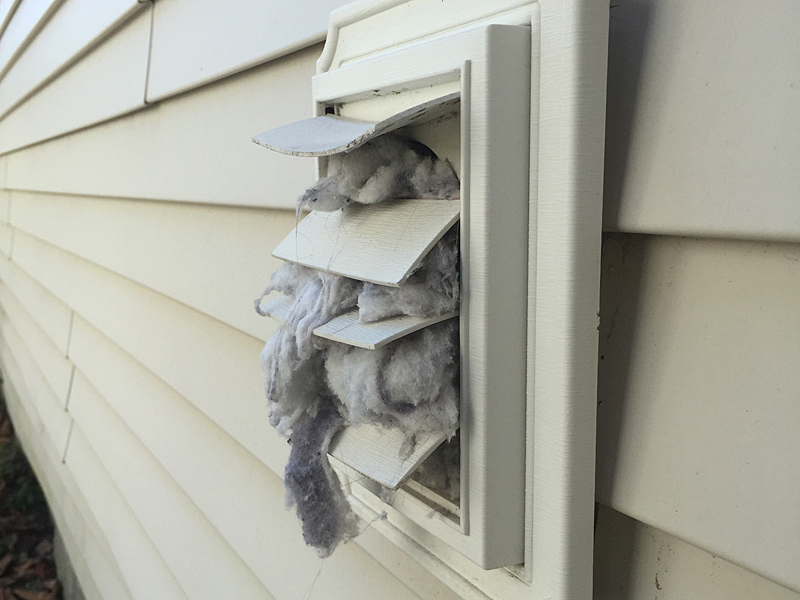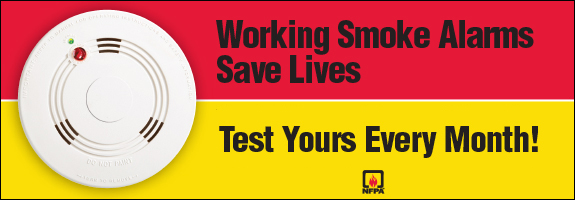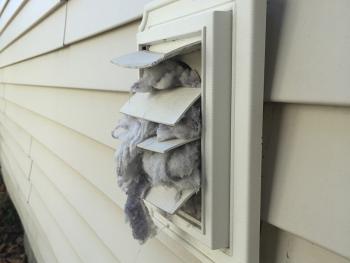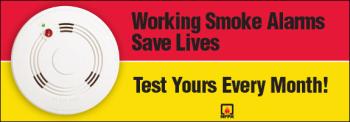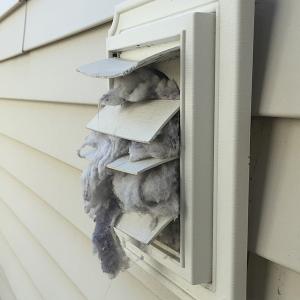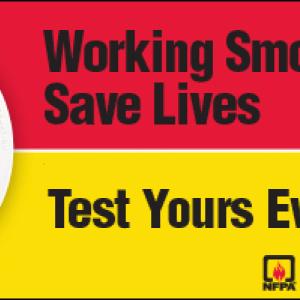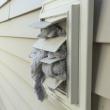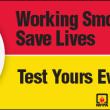The danger of not cleaning a dryer’s lint trap is real, and it can be deadly
If you've ever had a fire in your house, especially one caused by an overheated clothes dryer, you know the fear and panic that overtakes you, especially when you are woken up by the smell of smoke in your home.
That very thing happened to me in 1997, a year before I moved from my apartment of two years in Watertown, Mass., to Maine. I was living on the first floor of a duplex, with a family of five, three of them children, above me on the second floor.
Late one night, my two cats woke me up. They were climbing on top of me, pawing at my face. But I really came awake with a start, because I smelled smoke and heard the muffled bleeting of a smoke detector going off in the basement. This was before many homes had smoke detectors that triggered each other to go off. The closed bedroom door was directly across from the door to the full basement, and that's where there were two sets of washers and two sets of dryers. One set was mine and one set was my neighbors.
I felt the basement door, and it didn't feel hot, but there was smoke coming underneath so I didn't open it. I dialed 911, ran upstairs and banged on my neighbors' door and yelled "Fire, get out" and then grabbed my cats and ran outside to put them in the car. Helping the sleepy kids out of the house and into their car, I sat in my own car and watched as the Watertown Fire Department battled a dryer fire in the basement. Luckily, there was a bulkhead entrance, but they had to paw through children's toys, clothes, and piles of trash on the inside to actually access the fire in my neighbor’s dryer.
I won't go into too much detail about what the two sides of the basement looked like, but suffice it to say, the upstairs family used their side of the basement floor as a huge hamper.
According to a FEMA report, clothes dryer fire incidence in 2008-2010 was higher in the fall and winter months, peaking at 11 percent in January. The increase in fires in the cooler months may be explained by the quantity and type of clothes worn in these months. |
A clogged lint vent, created by not cleaning the lint trap, was the cause of the fire, I learned, to no real surprise. Due to the condition of the neighbor's side of the basement, the landlord inspected their apartment and discovered they had somehow opened and had been using the blocked fire place in their living room to burn trash, maybe even to keep warm.
I moved out soon after.
I tell you this story because I was shown a photo yesterday that brought this memory back to me in a wave. I had forgotten about it, but here it was, all over again.
Luckily, the reason this exterior dryer vent was found like this was because someone complained about a dryer that didn't seem to be working as well as it should.
I asked Camden Fire Chief Chris Farley to provide me with some information about the dangers of not cleaning out a lint trap, and then letting a dryer vent get this clogged. He also included a link to FEMA’s report on Clothes Dryer Fires in Residential Buildings (2008-2010).
Findings of the report:
• An estimated 2,900 clothes dryer fires in residential buildings are reported to U.S. fire departments each year and cause an estimated 5 deaths, 100 injuries, and $35 million in property loss.
• Clothes dryer fire incidence in residential buildings was higher in the fall and winter months, peaking in January at 11 percent.
• Failure to clean (34 percent) was the leading factor contributing to the ignition of clothes dryer fires in residential buildings.
• Dust, fiber, and lint (28 percent) and clothing not on a person (27 percent) were, by far, the leading items first ignited in clothes dryer fires in residential buildings.
• Fifty-four percent of clothes dryer fires in residential buildings were confined to the object of origin.
In addition, here is what Farley had to say:
"The dryer vent is there to act as a chimney for the appliance. Much like if the chimney for a woodstove or furnace is blocked; the restricted airflow out of a dryer vent as a result of lint buildup causes reduced airflow, a backup of exhaust gases and heat, and reduces the efficiency of the dryer. Excessive heat that the dryer produces remains within the unit itself. In the drying process, the items being dried give up small particles resulting in lint. Heat transfer from a blocked vent is restricted and the heat is trapped within a confined area," said Farley.
An excerpt from the Fundamentals of Fire Fighter Skills (2014 Edition) follows:
"Most of the fuels we encounter in fires are solids. In a structure fire, the building materials and most of the contents are solids rather than liquids or gases. When a solid fuel is burned, the actual combustion reaction does not occur within the solid itself. As the solid fuel heats up, it decomposes in a process known as pryolysis and releases individual molecules into the atmosphere. The combustion occurs when oxygen molecules in the air react with the individual fuel molecules, at the surface or slightly above the surface of the solid material. The surface to mass ratio (STMR) is an important factor when looking at a solid fuel. Wood is one of the most common solid fuels. A large solid piece of wood, such as a log, will burn, but it is not easy to ignite. A log has a low surface to mass ratio, because it has a relatively small surface area in relation to its large mass. A large amount of energy is needed to heat a log before it will release enough molecules to sustain a fire. If a log is cut into 2X4s, the STMR increases, because each individual piece of wood has more surface are in relation to its total mass. Less heat energy is required to heat a 2X4, and there is more surface area to ignite and will burn more rapidly than a log. If the wood is reduced down to sawdust, the STMR increases further. Each individual particle of sawdust has a small mass and a very large surface area in relation to its mass. A sawdust particle has a high STMR. Little energy is required to ignite sawdust particles, and they will burn extremely quickly."
According to Farley, three things are needed to create a fire: Fuel (solid, liquid or gas), oxygen and heat.
"The heat raises the temperature of the fuel and oxygen to a point where they will react together. Apply this to the blocked dryer vent situation," said Farley. "The lint produced in the drying process has a small mass and a very large surface area in relation to that mass. The dryer lint is the fuel a fire needs. The appliance itself is the heat source a fuel needs to produce a fire. Oxygen is present naturally. What is needed at this point to cause a fire is the chemical chain reaction between the oxygen, the heat source and the fuel when it reaches its ignition temperature. If the blocked dryer vent does not allow the heat to escape and the small surface area of the lint reaches its ignition temperature; a fire can occur."
On our to-do list this weekend, is to once again clean out our dryer’s lint trap and vent, from the appliance to the outside of the house. And then to make sure the lint trap is cleaned after each use. I encourage you all to do the same. Trust me, you don't want to ever wake up to the smell of a fire burning somewhere in your home.
Editorial Director Holly S. Edwards can be reached at hollyedwards@penbaypilot.com or 706-6655.
Event Date
Address
United States

